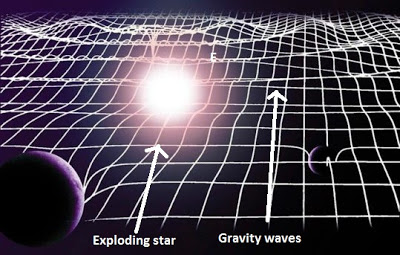Have you ever asked why galaxies do not collide? Why do planets not bump with each other though they are always moving? Why are raindrops from above and not from below? Why can we walk on Earth, but astronauts float on the moon? I know you haven’t asked these questions because you already knew the answer. Yes, it’s gravity! Gravity holds all things in place and makes life on Earth possible.

Gravity exists before planets do. It has been taken for granted until an apple falls off from the tree to trigger Isaac Newton’s theory of gravitation. But Newton discovered that gravity and its existence is much more than a fallen fruit. By definition, gravity, from the Latin word gravitas, which means ‘weight,’ is a natural force in which all physical things with mass, including planets, stars, galaxies, and even light, are brought towards one another.
On Earth, gravity gives mass to everything – from giant dinosaurs to microscopic organisms. It makes us possible to walk without falling, enables skyscrapers to stand, water holds the oceans, and tides change from high to low and vice versa. But the most accurate description of gravity can be studied in the General Theory of Relativity proposed by a German-born theoretical physicist, Albert Einstein.
In 1916, Einstein predicted a force that ripples in space caused by some of the most violent and energetic processes like exploding stars and collision or merging black holes in the Universe, which he called “gravitational waves.”
Astrophysicist, Shane Larson from Northwestern University defined gravitational waves as “propagating disturbances of the shape of the spacetime.”
The first proof of the existence of gravitational waves arrived in 1974, 20 years after Einstein’s death. In that year, two astronomers from Puerto Rico discovered a binary pulsar (pulsars are neutron stars that emit beams of radio waves), an identical type of system that general relativity predicted should radiate gravitational waves using the giant radio telescope in Arecibo Radio Observatory. This discovery has challenged Einstein’s predictions. However, after eight years of observation, they had proven that Einstein’s prediction was correct.
Since then, many astronomers become interested in pulsar radio-emissions and conduct their studies. However, scientists find it hard to prove the actual existence of gravitational waves because, by the time they reach us from distant events, they distort spacetime by a minuscule amount, which is impossible for most instruments to detect.
As technology and knowledge advances, scientists are getting closer to detect the wrinkles in spacetime caused by gravitational waves.
On September 14, 2015, a breakthrough in gravitational wave studies came. Finally, scientists have proved the existence and physically-sensed the distortion in spacetime using the latest, most ambitious, and most expensive physics experiments in decades: the Laser Interferometer Gravitational-Wave Observatory or LIGO.
For the first time in history, LIGO has detected the distortions in spacetime due to gravitational waves caused by a collision of black holes 1.3 billion light-years away from Earth, which is considered the most significant scientific discovery and achievement in astrophysics. This discovery won the Nobel Prize in Physics awarded to LIGO founders Rai Weiss, Kip Thorne, and Barry Barish on October 3, 2017.
But why do we care about these gravitational waves, and why did some government agencies pour out millions of dollars to fund research studies? It is because the first detection of gravitational waves by LIGO moved us closer to understand the laws governing the Universe, how heavenly objects behave, and how stars are born. It gives us a new vision of looking out what happens in space. And with the latest detection and observations using sophisticated yet accurate instruments coupled with state-of-the-art technologies, laboratories, and observatories, we can understand the origin of things in the vast Universe and helps us untangle the mysteries about inanimate objects known as neutron stars.
According to the National Aeronautics and Space Administration (NASA), human space explorations help us to address the questions of our existence in the Universe, the history of our solar system, and where it will lead us. With this, we can expand technology, create new industries, and connects nations in dealing with natural phenomena.
Still not interested? Just look at the moon and the stars at night, and you will realize how beautiful the Universe is.
